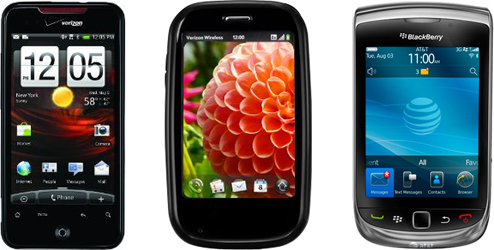Check out any new mobile that’s just out in the market. What are the chances that it lacks the ability to access Facebook? Close to zero. What are the chances that it doesn’t come equipped with a QWERTY keypad or a fancy Touchscreen? Again, very slim.
Recently, WATBlog featured a post on the ePhone and the BlackCherry, two in the range of new “Smartphone” look-alikes (of course, they do also have almost the same features). And now we have Micromax and Lava sporting what was once associated with the Blackberry – a full fledged QWERTY keypad. Lava seems to have over enthusiastically superseded all expectations by introducing an ALPHA keypad (which I consider supremely moronic).
Why the sudden madness? For one, the smartphone is no longer inaccessible to the common man. No longer is the smartphone a symbol of the MBA graduate or the CEO (in fact a news report in the Guardian talked aobut how teenagers were in love with their BlackBerrys.
A study by consultancy Frost and Sullivan has reported that smartphones will account for 54% of the Asia-pacific mobile market by 2015. This is a ginormous rise from the measly 5% in 2009. 477 million units are expected to be sold.
The Smartphone App Market in the World (please note that this does not include India since we’re not yet part of the iOS / Android craze) has reaced over $2.2 Billion in the first half of 2010. The report is by a Berlin based organization called Research2guidance. They’ve forecasted the world smartphone application market to reach $15 billion by 2013.
GetJar (an online site where you can download apps) conducted another survey back in March this year. They predict that the market will touch $17.5 billion.
Let’s try and understand this from your perspective – Why would you prefer a smartphone to a simpler model?
How does a smartphone help you?
For one, you can do so much more with it. I regret having a Symbian OS when I look at the number of applications that are available on other platforms. Yes, smartphones help you with email (even Push Mail sometimes), they have Internet access, Wi-Fi. But that’s not just it. There’s also GPS, high-end graphics, a better, smarter user-interface (it’s so much easier just typing out a person’s name and hoping your phone will search as you type as opposed to going to Contacts –> Type out name using Alphanumeric keypad). And again, I return to the Apps. Recently, we ran an article on how people can monitor their health with mobile applications. Today, look at any new site that’s hoping to reach out to people, chances are they have a mobile application ready for the popular Operating Systems (poor Symbian).

Smartphone - Then (pre iPhone)
Look at it from the Mobile Operator’s perspective. A smartphone means access to the Internet, and active use of a lot of features and apps (most of which inadvertently use the Internet). This translates to moolah. Consultancy Frost and Sullivan said that the data usage from smartphones would generate over $38 billion for the Asia-Pacific region by 2015. Compare this to $1.3 billion earned last year.
Add the long-standing Indian hope of achieving widespread 3G and there you have a nice package which make smartphones very appealing.
A few downsides:
- Where’s the 3G, Where’s the Wi-Fi? Without proper internet connectivity, the smartphone remains exactly that – a phone which is reasonably smart leaving aside any probability of it being an awesome handheld computing experience. (Here’s an interesting news piece on how Android smartphones could replace Supercomputers)
- Prepaid Cards : (Frost and Sullivan estimates this to be 97% of the mobile market). These apparently make smartphone subsidies difficult to access. Which is understandable, the service provider expects dedicated usage from the person using subsidisied charges for data transfer.
- Catching up to the West. Most Indian mobiles that claim to run Android are yet to upgrade to Froyo. Most smartphones still run Symbian – a once awesome operating system which now lies as a ruin in the ecosystem of mobile operating systems. Nokia made it open source, and now is busy with Meego and Maemo. Where’s the development?

No comments:
Post a Comment